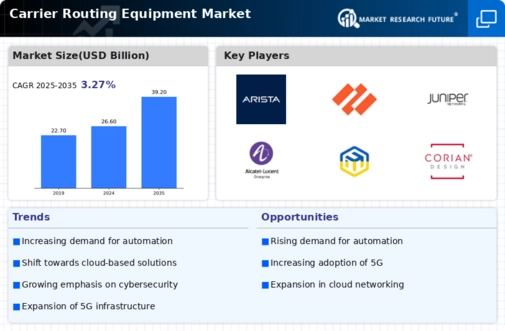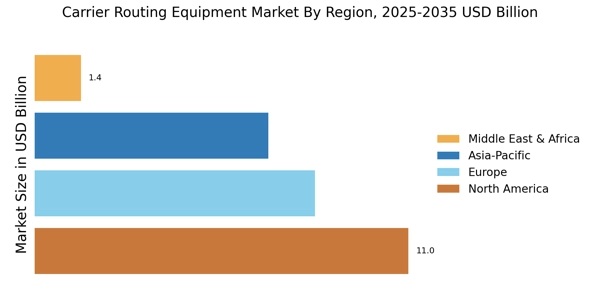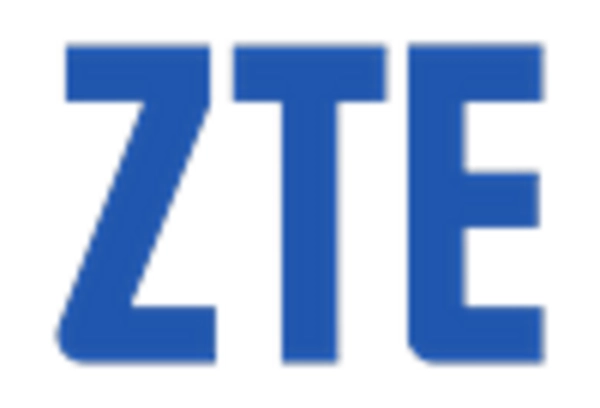The Carrier Routing Equipment Market is currently characterized by a dynamic competitive landscape, driven by rapid technological advancements and increasing demand for high-capacity data transmission. Major players such as Cisco Systems (US), Juniper Networks (US), and Huawei Technologies (CN) are at the forefront, each adopting distinct strategies to enhance their market positioning. Cisco Systems (US) emphasizes innovation through its focus on software-defined networking (SDN) and cloud-based solutions, while Juniper Networks (US) is concentrating on expanding its portfolio of AI-driven routing technologies. Huawei Technologies (CN), despite facing geopolitical challenges, continues to invest heavily in R&D, particularly in 5G routing solutions, thereby reinforcing its competitive edge. Collectively, these strategies contribute to a competitive environment that is increasingly shaped by technological innovation and strategic partnerships.
In terms of business tactics, companies are increasingly localizing manufacturing and optimizing supply chains to enhance operational efficiency and reduce costs. The Carrier Routing Equipment Market appears moderately fragmented, with a mix of established players and emerging companies vying for market share. The collective influence of key players is significant, as they not only drive technological advancements but also set industry standards that smaller competitors often follow.
In August 2025, Cisco Systems (US) announced a strategic partnership with a leading cloud service provider to enhance its routing solutions for enterprise customers. This collaboration is expected to leverage Cisco's advanced routing technologies alongside the cloud provider's infrastructure, thereby creating a more robust offering for businesses seeking scalable and efficient networking solutions. The strategic importance of this partnership lies in its potential to capture a larger share of the enterprise market, which is increasingly shifting towards cloud-based services.
In September 2025, Juniper Networks (US) unveiled its latest AI-driven routing platform, designed to optimize network performance and reduce operational costs for service providers. This launch is particularly significant as it positions Juniper as a leader in the integration of AI within routing technologies, potentially attracting new customers looking for innovative solutions to manage their networks more effectively. The emphasis on AI not only enhances the functionality of their products but also aligns with broader industry trends towards automation and intelligent networking.
In July 2025, Huawei Technologies (CN) secured a major contract with a telecommunications operator in Europe to deploy its next-generation routing equipment. This contract is indicative of Huawei's resilience in the face of international scrutiny and its ability to maintain a strong foothold in key markets. The strategic importance of this contract lies in its potential to bolster Huawei's reputation as a leading provider of advanced routing solutions, particularly in the 5G space, which is expected to see exponential growth in the coming years.
As of October 2025, the Carrier Routing Equipment Market is witnessing trends that emphasize digitalization, sustainability, and the integration of artificial intelligence. Strategic alliances are increasingly shaping the competitive landscape, as companies recognize the need to collaborate to enhance their technological capabilities and market reach. Looking ahead, competitive differentiation is likely to evolve from traditional price-based competition towards a focus on innovation, advanced technology, and supply chain reliability, as companies strive to meet the growing demands of a digital-first world.


















Leave a Comment